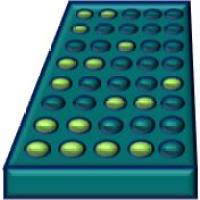Natural product chemistry often yields new compounds with great potential for economic and/or health benefits. However, most natural compounds must be artificially synthesized on an industrial scale to generate enough active ingredients to be commercially viable. Thus chemical synthesis is an essential tool of natural product chemistry. Chemical synthesis may be defined as the purposeful execution of a series of chemical reactions in order to obtain a product(s) of interest or to demonstrate important methodologies. Organic synthesis is (unsurprisingly) specifically concerned with the construction of organic compounds, which are often of an exceedingly high level of structural complexity. Each step of any form of chemical synthesis involves a chemical reaction, and the reagents and conditions for each of these need to be designed to give a good yield and a pure product. Here we illustrate this methodology using a simple protocol for the synthesis of the metabolites of the natural product melatonin, the kynurenamines N1-acetyl-N2 -formyl-5-methoxykynurenine (K1 ) and N -acetyl-5-methoxykynurenamine (K2 ). The four key synthetic transformations involve (a) conversion of 4-methoxy aniline into the tert -butyl (4-methoxyphenyl)carbamate, (b) ortho -lithiation-iodination with tert -butyllithium-1,2-iodoethane, (c) use of the Sonogashira reaction with N -acetyl propargylamine, and (d) sequential alkyne hydration/formylation to give (K1 ) or alkyne to give (K2 ).






